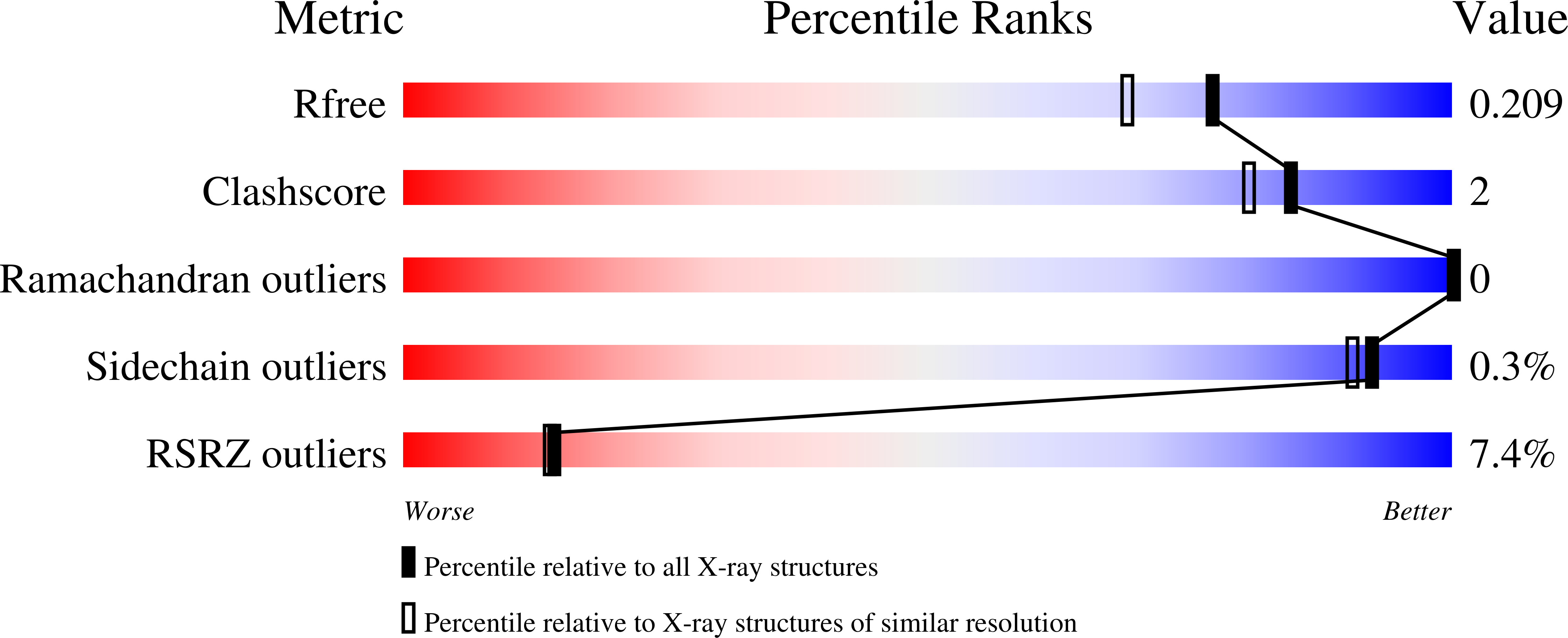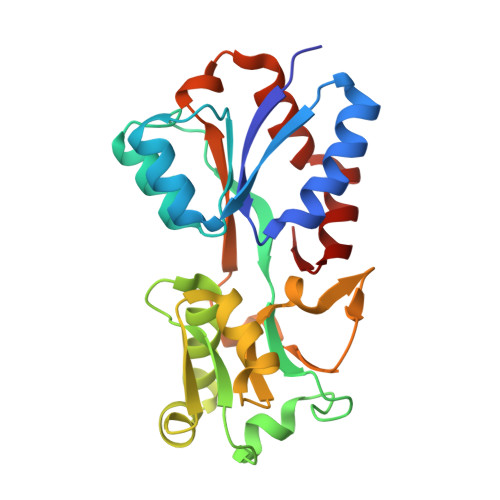The Impact of Chromate on Pseudomonas aeruginosa Molybdenum Homeostasis.
Maunders, E.A., Ngu, D.H.Y., Ganio, K., Hossain, S.I., Lim, B.Y.J., Leeming, M.G., Luo, Z., Tan, A., Deplazes, E., Kobe, B., McDevitt, C.A.(2022) Front Microbiol 13: 903146-903146
- PubMed: 35685933
- DOI: https://doi.org/10.3389/fmicb.2022.903146
- Primary Citation of Related Structures:
7T4Z, 7T50, 7T51, 7T5A - PubMed Abstract:
Acquisition of the trace-element molybdenum via the high-affinity ATP-binding cassette permease ModABC is essential for Pseudomonas aeruginosa respiration in anaerobic and microaerophilic environments. This study determined the X-ray crystal structures of the molybdenum-recruiting solute-binding protein ModA from P. aeruginosa PAO1 in the metal-free state and bound to the group 6 metal oxyanions molybdate, tungstate, and chromate. Pseudomonas aeruginosa PAO1 ModA has a non-contiguous dual-hinged bilobal structure with a single metal-binding site positioned between the two domains. Metal binding results in a 22° relative rotation of the two lobes with the oxyanions coordinated by four residues, that contribute six hydrogen bonds, distinct from ModA orthologues that feature an additional oxyanion-binding residue. Analysis of 485 Pseudomonas ModA sequences revealed conservation of the metal-binding residues and β-sheet structural elements, highlighting their contribution to protein structure and function. Despite the capacity of ModA to bind chromate, deletion of modA did not affect P. aeruginosa PAO1 sensitivity to chromate toxicity nor impact cellular accumulation of chromate. Exposure to sub-inhibitory concentrations of chromate broadly perturbed P. aeruginosa metal homeostasis and, unexpectedly, was associated with an increase in ModA-mediated molybdenum uptake. Elemental analyses of the proteome from anaerobically grown P. aeruginosa revealed that, despite the increase in cellular molybdenum upon chromate exposure, distribution of the metal within the proteome was substantially perturbed. This suggested that molybdoprotein cofactor acquisition may be disrupted, consistent with the potent toxicity of chromate under anaerobic conditions. Collectively, these data reveal a complex relationship between chromate toxicity, molybdenum homeostasis and anaerobic respiration.
Organizational Affiliation:
Department of Microbiology and Immunology, The Peter Doherty Institute for Infection and Immunity, University of Melbourne, Melbourne, VIC, Australia.

















